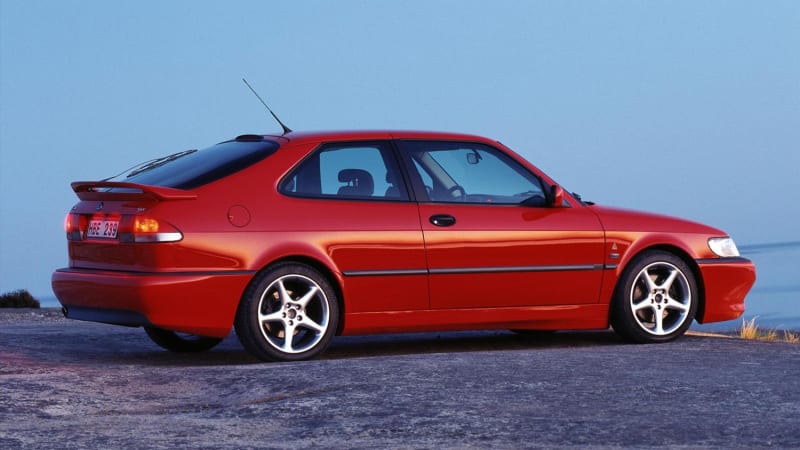Future Classic: 1999-2002 Saab 9-3 Viggen

Given the company’s now-defunct status, you could argue that all Saabs are future classics. Even the final round of cars from the era of General Motors ownership deserve their place in history. Seriously, how hot was the last 9-5?
Handsome design and quirky features were hallmarks of the Saab brand, and its cars felt every bit as premium as its primary European competitors. But while other luxury carmakers put great effort into full lineups of performance cars, Sweden only produced the odd sporty Saab every once in a while. One of our favorites was the 9-3 Viggen from the turn of the century, and it’s a car that still makes us swoon today.
Why is the Saab 9-3 Viggen a future classic?
Saab’s whole “born from jets” tagline never really made much sense, but at least the 9-3 Viggen’s name was a nod to the company’s aerospace roots. The Swedish word “Viggen” translates to “thunderbolt” in English, and this name was used on the Saab 37 Viggen aircraft that entered service in the early 1970s.
The 9-3 Viggen used a turbocharged 2.3-liter inline-four engine, most notably remembered for its eyebrow-raising 20 psi of boost pressure. Rated at 225 horsepower – which was later bumped up to 230 hp – and 252 pound-feet of torque, this engine was paired exclusively with a five-speed manual transmission and front-wheel drive. Stiffer suspension components, firmer dampers, stronger driveshafts, a heavy-duty clutch and a revised exhaust were also part of the package.
The Viggen was relatively quick, with Saab quoting a 0-to-60-mph time of around 6.5 seconds. However, the 9-3 Viggen is largely remembered for things like its ridiculous turbo lag and torque steer – characteristics that kind of made this car hilarious to drive, even if they took away from overall sharpness and composure.
What is the ideal example of the Saab 9-3 Viggen?
Saab offered the 9-3 Viggen as a three-door hatchback, five-door hatchback and two-door convertible. And while this car is most commonly remembered in its launch shade, Lightning Blue, Saab offered the Viggen in black, gray, red, silver and yellow. You could even spec the interior with blue, orange or tan leather accents.

Arguably the most iconic 9-3 Viggen spec is a Lightning Blue three-door hatch, but the other colors are far more rare. We’ve got a major soft spot for a Monte Carlo Yellow five-door, but really, you can’t go wrong. Maybe avoid the Viggen convertible, though, unless you like the idea of cowl-shaking yourself to death.
Our used vehicle listings can be helpful to find a good deal near you. Narrow the offerings down by a radius around your ZIP code, and pay attention to the deal rating on each listing to see how a vehicle compares with others in a similar area.
Are there any good alternatives to the Saab 9-3 Viggen?
Oh goodness, yes. One of the Viggen’s biggest problems is that it played in the same space as some well-established performance cars – things like the Audi S4, BMW M3 and Mercedes-Benz C43 AMG – all of which were objectively better to drive.
But no one waxes nostalgic over a Saab because of its crisp on-road manners. Instead, we remember things like the center console-mounted ignition, the weird flip-out cup holders, the upright dashboard and, of course, Night Panel. For these reasons and more, the 9-3 Viggen will always be a highly sought-after Saab.
Related video:



